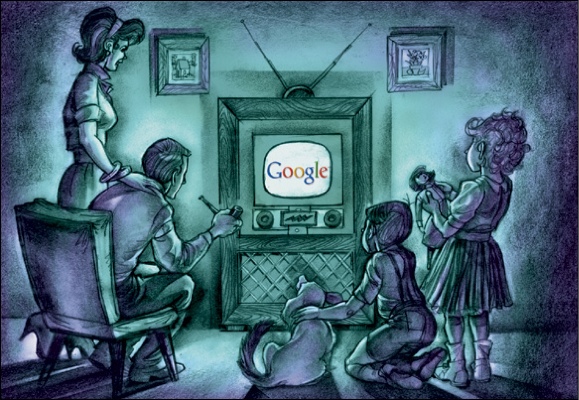This Time, the Revolution Will Be Televised
CONVERGENCE is back, but it is not what it used
to be. Following its release after about five years in the halfway house for
overblown business ideas, it has been swiftly rehabilitated in the form of
various online-offline business ventures.

Convergence is back, but it is not what it used to be. Following its release after about five years in the halfway house for overblown business ideas, it has been swiftly rehabilitated in the form of various online-offline business ventures.
This time around, though, some fairly radical wrinkles on the theme are in the works. One notable example is Google’s deal last week to acquire dMarc Broadcasting for up to $1.24 billion.
DMarc uses software to help place ads on radio, and it could conceivably do the same for Google’s armada of Web ads. The deal, along with other experiments by Google to reproduce its advertisers’ notices in newspapers and other print outlets, suggests that Convergence 2.0 is moving in interesting and previously undeveloped directions.
What would it mean if TV shows viewed or downloaded over the Internet could be watched only by people in certain geographic areas, mimicking the network affiliate model of over-the-air television? And what if it were as easy and inexpensive for local pizza parlors to buy cable television spots as it is for them to put ads on the Internet through portals like Google and Yahoo?
The critical portion of this technology is being able to offer your localized, comparatively inexpensive TV spots on the Web instead of [or in addition to] local OTA or cable TV. Here comes another media war zone. It will pit the stodgy media barons and lapdog politicians against adroit geeks and Web marketing types.
Posted: Mon - January 23, 2006 at 06:34 AM